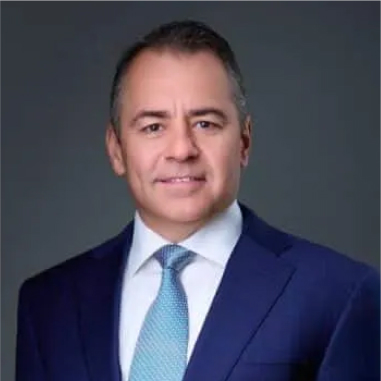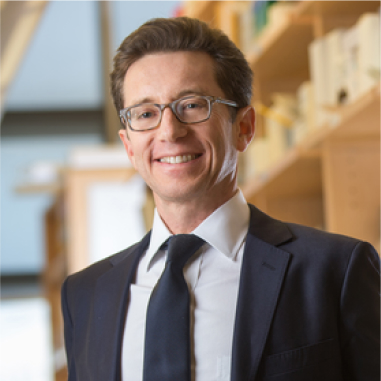

Nathan Bryan earned his undergraduate Bachelor of Science degree in Biochemistry from the University of Texas at Austin and his doctoral degree from Louisiana State University School of Medicine in Shreveport where he was the recipient of the Dean’s Award for Excellence in Research. He pursued his post-doctoral training as a Kirschstein Fellow at Boston University School of Medicine in the Whitaker Cardiovascular Institute. After a two year post-doctoral fellowship, in 2006 Dr. Bryan was recruited to join faculty at the University of Texas Health Science Center at Houston by Ferid Murad, M.D., Ph.D., 1998 Nobel Laureate in Medicine or Physiology.
Dr. Bryan has been involved in nitric oxide research for the past 18 years and has made many seminal discoveries in the field. These discoveries and findings have transformed the development of safe and effective functional bioactive natural products in the treatment and prevention of human disease and may provide the basis for new preventive or therapeutic strategies in many chronic diseases. His many seminal discoveries have resulted in over a dozen issued US and International patents. He is also a successful entrepreneur who has successfully commercialized his nitric oxide technology. Dr. Bryan has published a number of highly cited papers and authored or edited 5 books. He is an international leader in molecular medicine and nitric oxide biochemistry.

Martin is a licensed Pharmacist, Pharmacologist, Systems Biologist and Analytical Chemist with a particular expertise in cardiovascular physiology, adaptation to hypoxia and other stressors as well as the chemical biology of NO/HNO and sulfur in its various forms (incl persulfides and polysulfides). His interests in the chemical interactions between reactive oxygen, nitrogen and sulfur species in the context of mitochondrial function, redox signaling and whole-body electron balance led to the development of conceptual frameworks known as the ‘Reactive Species Interactome’ and the ‘Redox Interactome’.
Martin is affiliated with the School of Clinical and Experimental Sciences in the Faculty of Medicine, the Perioperative and Critical Care group at the NIHR Southampton Biomedical Research Centre and the Institute for Life Sciences on main campus. He is also the Deputy Director of the SCBR Mass Spectrometry Unit at the Southampton General Hospital.

An American physician scientist known for the discovery of protein S-nitrosylation, a global post-translational modification of proteins that is widely involved in both physiology and disease. Dr Stamler is also known for a track record of innovation and entrepreneurship as a founder of institutes, biotechnology companies, medical societies, innovation platforms and impact investment funds. He has co-authored nearly 400original manuscripts and 225 issued patents and has been recognized with multiple awards. His work has been covered in numerous lay publications, including the front page and science sections of the New York Times, as well as Time Magazine and The Economist, in books on the history of science, and in works on outlier innovators.
Jonathan Stamler discovered protein S-nitrosylation (binding of nitric oxide to Cys residues) as a ubiquitous posttranslational modification of proteins and the archetype redox signaling system across phylogeny. All classes of proteins can be modified by S-nitrosylation from bacteria to humans, and aberrant S-nitrosylation plays important roles in disease from heart failure to Alzheimer’s, asthma, diabetes, and cancer. Dr Stamler has shown that S-nitrosylation is controlled enzymatically by writer and eraser enzymes (that are being connected to specific signaling pathways) and that it regulates widespread physiology, including functions of the heart, skeletal muscle, vasculature and airways. His notable discovery that S-nitrosylation of hemoglobin is needed to oxygenate healthy tissues has re-defined the respiratory cycle as a three- (not two-) gas system—O2/NO/CO2—and identified an essential role for RBCs in control of blood flow. Dr Stamler also discovered trans-kingdom S-nitrosylation through which microbiome bacteria broadly modify host proteins to control animal physiology and development, and he identified how the drug nitroglycerin works. His discoveries have thus changed the understanding of signaling by gaseous messengers, reshaped nitric oxide/redox biology, and broadly impacted the biological sciences.

Dennis J. Stuehr received his PhD in BiochemicalToxicology at The Massachusetts Institute of Technology in 1987, where he identifiedthe first mammalian cell to generate nitrogen oxides. In 1987 he moved toCornell University Medical College and joined the faculty in 1989, then moved toThe Cleveland Clinic in 1991 where he presently is a Professor of MolecularMedicine at the Medical School. He is a founding member of the NO society, theNO Journal, and the NO Gordon Conference. Dr. Stuehr’s research on NO synthaseenzymology and how NO regulates heme iron trafficking and protein function hasmade wide-ranging fundamental contributions toward our understanding of NO in humanhealth and in diseases such as asthma, hypertension, and cancer.